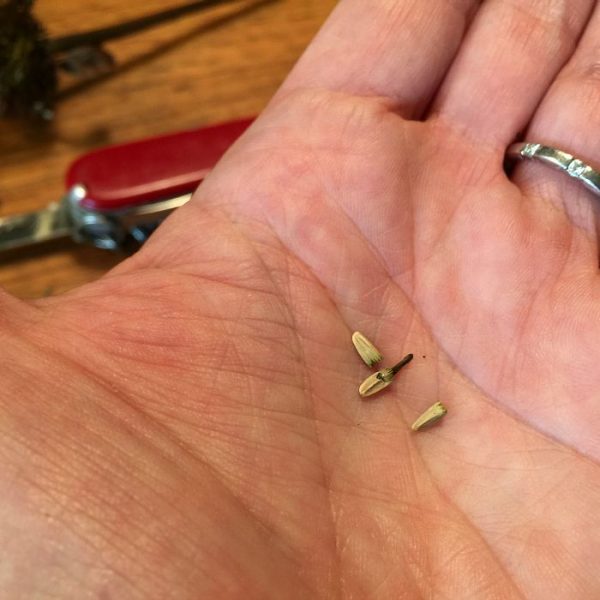Save Coneflower Seeds
If you're an avid gardener, you know the importance of saving seeds from your favorite plants. One plant that's easy to save seeds from is the coneflower, also known as Echinacea. Not only can you save money by collecting and storing your own seeds, but you can also ensure the future health and vitality of your garden by selecting the strongest plants to propagate. To learn how to save coneflower seeds, read on.
When it comes to saving coneflower seeds, some common pain points include not knowing when or how to collect the seeds, difficulty separating the seeds from the flower, and uncertainty about how to store the seeds properly for future use. But fear not - saving coneflower seeds is easier than you might think!
The first step in saving coneflower seeds is to wait until the flower heads have dried out completely on the plant. Once the center of the flower head is hard and the petals have fallen off, it's time to collect the seeds. Simply cut off the dried flower head and shake it into a paper bag or onto a tray to collect the seeds.
Next, use your fingers or a fork to separate the seeds from the flower head. This can be a bit tedious, but it's important to remove any bits of chaff or debris from the seeds.
To store the seeds, place them in a paper envelope or a sealed glass jar and keep them in a cool, dry place. Be sure to label the container with the date and the type of seed, so you know what you have when it's time to plant.
Why save coneflower seeds?
I first started saving coneflower seeds when I realized how much money I was spending on buying new plants every year. By saving seeds, I could grow the same beautiful blooms without having to spend any additional money. But more than that, I love knowing that I'm able to preserve a piece of my garden's history by propagating plants that have thrived in my unique growing conditions.
How to propagate coneflowers with saved seeds
Saving coneflower seeds is just the first step - you'll also need to know how to propagate your new plants. The easiest way to do this is to sow the seeds directly into the ground in the fall, after the first frost. Alternatively, you can plant them in seed trays in the spring and transplant them outside once they've grown to a manageable size.
Tips for successful coneflower propagation
To ensure the health and vitality of your coneflower plants, be sure to select the strongest seeds for planting. Look for seeds that are plump and firm, without any visible damage or signs of mold. You should also choose plants that have grown well in your particular growing conditions, whether that's full sun or partial shade.
Coneflower seed resources
If you're interested in learning more about saving coneflower seeds, there are plenty of resources available online and in print. Some of my favorites include the book Seedswap by Josie Jeffery, as well as the online gardening forums at GardenWeb and Houzz. You can also check out local gardening groups or seed exchanges to connect with other avid gardeners in your area.
Question and Answer
Q: When is the best time to collect coneflower seeds?
A: The best time to collect coneflower seeds is once the flower head has dried completely on the plant, and the center is hard and the petals have fallen off.
Q: How should I store coneflower seeds?
A: To store coneflower seeds, place them in a paper envelope or a sealed glass jar and keep them in a cool, dry place. Be sure to label the container with the date and the type of seed, so you know what you have when it's time to plant.
Q: How can I ensure the health of my coneflower plants?
A: To ensure the health and vitality of your coneflower plants, be sure to select the strongest seeds for planting. Look for seeds that are plump and firm, without any visible damage or signs of mold. You should also choose plants that have grown well in your particular growing conditions, whether that's full sun or partial shade.
Q: What are the benefits of saving coneflower seeds?
A: By saving coneflower seeds, you can save money on buying new plants each year, and ensure the future health and vitality of your garden by selecting the strongest plants to propagate. You can also preserve a piece of your garden's history by propagating plants that have thrived in your unique growing conditions.
Conclusion
Saving coneflower seeds is a simple and rewarding process that any gardener can undertake. By following a few basic steps, you can collect and store your own seeds, propagate new plants, and ensure the future health and vitality of your garden. Whether you're a seasoned expert or a novice gardener just starting out, saving coneflower seeds is a great way to connect with nature and preserve the beauty of your garden for years to come.
Gallery
How To Save Echinacea Seeds: Quick And Easy Way For How To Save

Photo Credit by: bing.com / seeds coneflower echinacea
How To Harvest Coneflower Seeds - Grace Grits And Gardening

Photo Credit by: bing.com / coneflower seeds harvest videoing process
Easiest Way To Save Echinacea/Coneflower Seeds! Hundreds Of Seeds In A

Photo Credit by: bing.com / seeds echinacea coneflower choose board seed way flower
How To Save Seeds Of Echinacea (Coneflower) - Growing The Home Garden
+seeds+-+how+to+separate+seeds+from+coneflowers+10-2012-1.jpg)
Photo Credit by: bing.com / seeds echinacea coneflower separate coneflowers
How To Collect & Save Coneflower Seeds With The Little Gardener From

Photo Credit by: bing.com / coneflower gardener echinacea